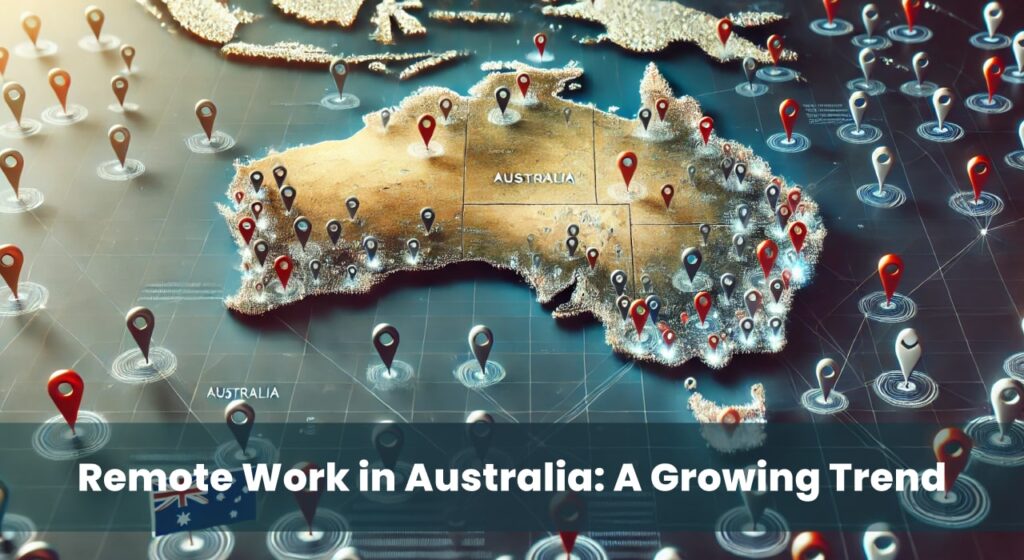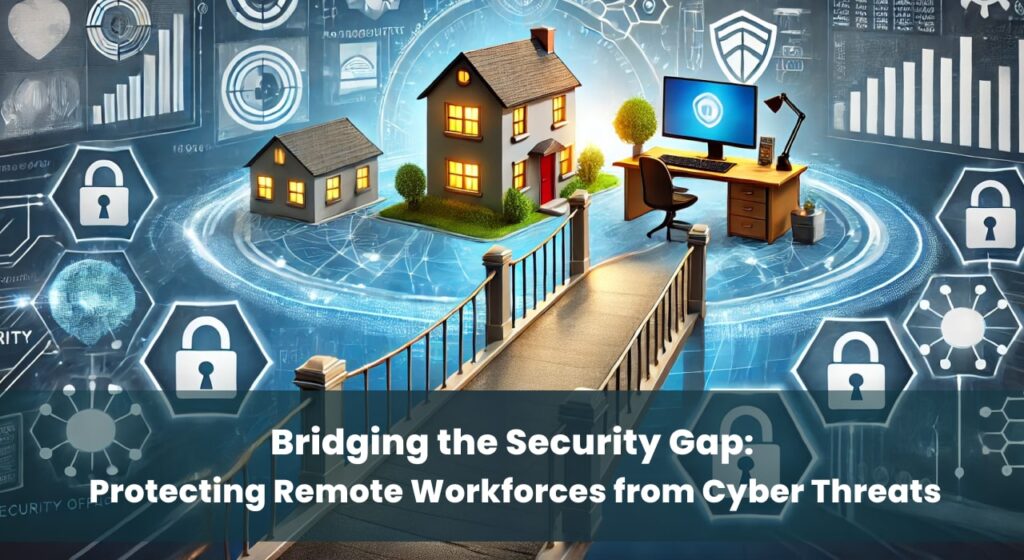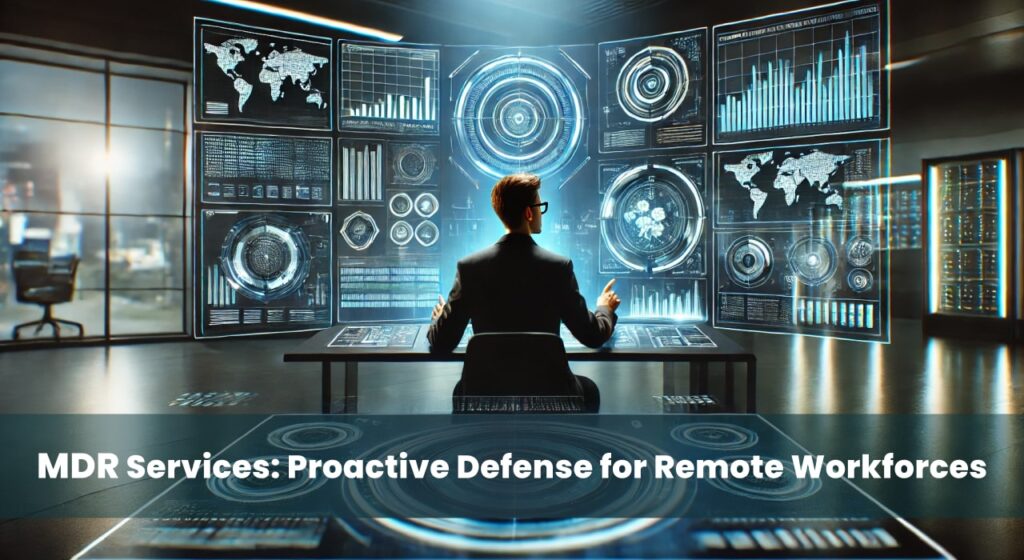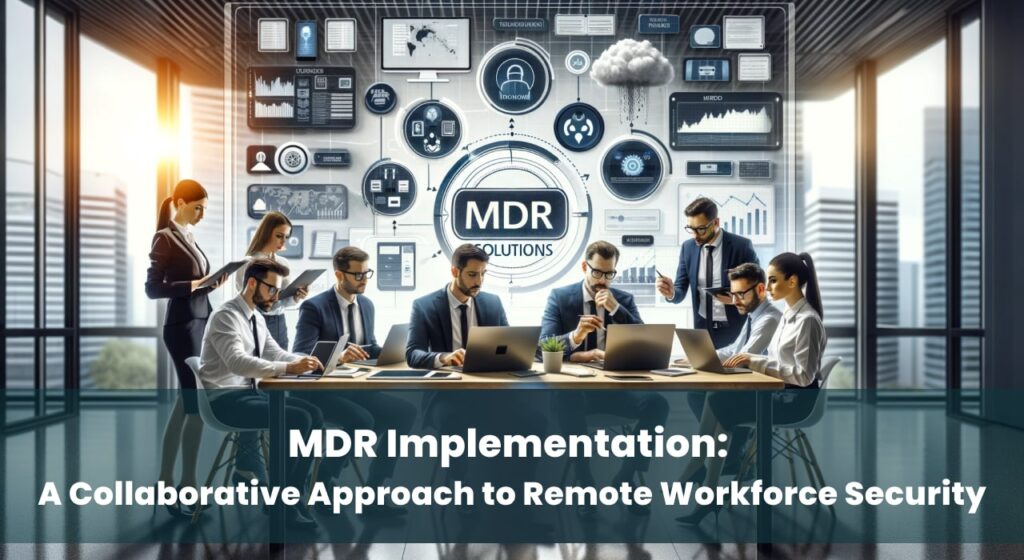
The Australian workforce is undergoing a significant transformation, with remote work arrangements becoming increasingly commonplace. A 2022 survey by Finder revealed that nearly 29% of Australians currently work remotely, with this figure expected to climb further. This shift towards geographically dispersed teams offers undeniable benefits for businesses, such as access to a wider talent pool and reduced overhead costs. However, this decentralised work model also presents unique challenges, particularly in the realm of cybersecurity.
Unlike traditional office environments with robust security measures, remote workforces operate outside the physical and digital boundaries of an organisation. Employees accessing sensitive data from personal devices on unsecured Wi-Fi networks create vulnerabilities that cybercriminals are actively exploiting. In fact, the Australian Cyber Security Centre (ACSC) reported a 13% increase in cyberattacks on Australian businesses in 2022, with many targeting remote workers through phishing scams and malware infiltration. These attacks can have devastating consequences, leading to data breaches, financial losses, and reputational damage.
To combat these evolving threats and safeguard their remote workforces, organisations are increasingly turning to Managed Detection and Response (MDR) services. MDR providers act as an extension of an organisation’s security team, offering continuous monitoring, threat detection, investigation, and response capabilities. By leveraging advanced security expertise and technologies, MDR services can significantly enhance an organisation’s ability to proactively identify and mitigate cyber threats in a remote work environment.
The Expanding Landscape of Remote Work in Australia

The past few years have witnessed a phenomenal surge in remote work arrangements across Australia. A 2023 survey conducted by the Melbourne Institute and Roy Morgan found that nearly 40% of Australian workers expressed a desire to work remotely for a greater portion of their working week than their employers currently permit. This significant shift in work preferences can be attributed to a confluence of factors.
Technological advancements have undoubtedly played a pivotal role in enabling a seamless transition to remote work. Cloud-based applications, video conferencing tools, and collaborative platforms have empowered employees to remain productive and connected irrespective of their physical location. The COVID-19 pandemic further accelerated the adoption of remote work models. As social distancing measures became imperative, organisations across various industries were forced to rapidly adapt by implementing remote work protocols. This large-scale experiment not only proved feasible but also yielded unexpected benefits, prompting many businesses to embrace a more flexible work culture even after the initial pandemic disruptions subsided.
The allure of remote work extends beyond simply weathering a global crisis. Businesses stand to gain significant advantages from a geographically dispersed workforce. Reduced office overhead costs, access to a wider talent pool unconstrained by geographical limitations, and improved employee morale and retention are just some of the potential benefits. For employees, remote work offers greater autonomy, a better work-life balance, and the ability to escape the constraints of a traditional office environment. As technology continues to evolve and societal attitudes towards work flexibility shift, remote work arrangements are poised to become an even more prominent feature of the Australian employment landscape.
Cybersecurity Challenges in Remote Workforces

The decentralised nature of remote workforces introduces a distinct set of cybersecurity challenges that traditional office security measures are often ill-equipped to address. Unlike the controlled environment of a corporate network, remote workers operate from a variety of locations, each with its own inherent security risks.
One significant concern lies in the reliance on unsecured Wi-Fi networks. Public Wi-Fi hotspots, while convenient, are frequently unencrypted, making them prime targets for cybercriminals to intercept sensitive data transmissions. Even seemingly secure home Wi-Fi networks can be vulnerable if not properly configured with strong passwords and encryption protocols.
The use of unmanaged personal devices further exacerbates the cybersecurity risk. Remote workers may utilise laptops, tablets, or smartphones that lack the robust security measures typically deployed on corporate-issued devices. These personal devices might have outdated software or inadequate anti-virus protection, creating exploitable vulnerabilities for attackers.
Phishing scams pose a particularly potent threat to remote workers. Cybercriminals exploit the potential for inattentiveness or a relaxed security posture in remote environments. Deceptive emails disguised as legitimate communications can trick employees into revealing sensitive information or clicking malicious links that download malware onto their devices.
The lack of physical security controls in remote work settings also presents a vulnerability. Unlike a secure office environment, a remote worker’s home office may not have the same level of physical security measures in place. This can increase the risk of unauthorised access to devices or sensitive documents if left unattended.
The consequences of cyberattacks on remote workforces can be devastating. Data breaches can expose confidential client information, intellectual property, or employee data, leading to significant financial losses and reputational damage. A 2022 report by the Australian Cyber Security Centre (ACSC) underlines the severity of this threat, highlighting a surge in ransomware attacks targeting Australian businesses. These attacks can cripple operations, disrupt productivity, and incur substantial costs for remediation. The potential ramifications of cyberattacks underscore the critical need for robust cybersecurity measures specifically tailored to the unique challenges of remote work environments.
Managed Detection and Response (MDR) Services

In the ever-evolving cybersecurity landscape, Managed Detection and Response (MDR) services have emerged as a powerful tool for organisations seeking to fortify their defences, particularly when managing a dispersed remote workforce. MDR providers act as an extension of an organisation’s internal security team, offering a comprehensive suite of services designed to proactively combat cyber threats
At the core of MDR lies a three-pronged approach: threat detection, investigation, and response. MDR providers leverage advanced security tools and threat intelligence feeds to continuously monitor an organisation’s IT infrastructure, including the devices and networks utilised by remote employees. This continuous monitoring allows for the identification of suspicious activity that might evade traditional security measures.
When a potential threat is detected, the MDR team investigates its nature and scope. This may involve analysing network traffic patterns, identifying malware signatures, and assessing the potential impact on the organisation. By leveraging their expertise and access to advanced threat hunting techniques, MDR providers can efficiently investigate potential incidents, saving valuable time and resources for an organisation’s internal security team.
The true value of MDR lies in its ability to facilitate a swift and effective response to confirmed cyber threats. MDR providers can take decisive action to contain the attack, mitigate potential damage, and ensure business continuity. This might involve isolating infected devices, deploying remediation tools, and notifying the relevant authorities.
For organisations with remote workforces, MDR services offer a compelling value proposition. The 24/7 monitoring provided by MDR providers ensures that threats are identified and addressed regardless of the time zone or location of remote employees. Additionally, MDR providers bring a wealth of cybersecurity expertise to the table, providing organisations with access to a broader skillset than they might be able to cultivate internally. This expertise is particularly valuable in today’s complex threat landscape, where cybercriminals are constantly developing new tactics. Finally, MDR services can significantly improve an organisation’s response times to cyberattacks. The faster a threat is contained, the less damage it can inflict. By offering a rapid response capability, MDR services can minimise downtime and financial losses associated with cyberattacks.
For a more comprehensive understanding of MDR services and their functionalities, consider exploring the website of a reputable MDR provider such as Palo Alto Networks.
Selecting the Right MDR Provider in Australia
For a more in-depth exploration of selecting the most suitable MDR provider for your Australian business, exploring industry expertise, cost considerations, and the evaluation process, visit our blog post: [Selecting the Right MDR Provider in Australia]. This comprehensive guide will equip you with the knowledge to confidently choose an MDR partner that strengthens your organization’s cybersecurity posture and safeguards your remote workforce.
Implementing MDR for Enhanced Security in Remote Work

Successfully integrating MDR services into an organisation with a remote workforce requires a well-defined implementation strategy. Here are the key steps to ensure a smooth transition and maximise the benefits of MDR:
- Conduct a Security Risk Assessment: The foundation for any successful security initiative lies in a thorough understanding of your organisation’s vulnerabilities. A comprehensive security risk assessment will identify potential weaknesses in your IT infrastructure, particularly those specific to remote work environments. This assessment should evaluate the security posture of devices used by remote employees, the strength of your network security controls, and the existing security awareness of your remote workforce.
- Select an MDR Provider Based on Specific Needs: The MDR provider landscape is diverse, offering a range of service tiers and functionalities. It’s crucial to select a provider whose offerings align with your organisation’s specific requirements. Consider factors like the size and complexity of your remote workforce, your budget, and the specific security threats you are most vulnerable to. Evaluating a provider’s track record, customer testimonials, and expertise in securing remote work environments will also inform your decision.
- Integrate MDR Solutions with Existing Security Infrastructure: Ensuring seamless integration between your existing security tools and the MDR provider’s platform is essential for efficient threat detection and response. This may involve configuration adjustments or the deployment of lightweight security agents on remote employee devices. Open communication and collaboration with the MDR provider during this phase are critical to ensure a smooth operationalisation of the MDR service.
- Train Employees on Cybersecurity Best Practices for Remote Work: MDR services, while powerful, are not a silver bullet. Empowering your remote workforce with cybersecurity awareness training remains paramount. This training should educate employees on identifying phishing scams, maintaining strong password hygiene, and avoiding risky online behaviour. Regular training sessions will equip your remote team with the knowledge and vigilance necessary to become a strong first line of defense against cyber threats.
- Ongoing Communication and Collaboration: A successful MDR implementation fosters a collaborative environment between your organisation and the MDR provider. Establishing clear communication channels and maintaining regular dialogue is critical. This ongoing collaboration allows for efficient threat investigation, informed security posture adjustments, and continuous improvement of your overall security posture.
By following these steps and fostering close collaboration with a qualified MDR provider, organisations can leverage the power of MDR services to bolster their cybersecurity defenses and safeguard their remote workforce against evolving cyber threats.
Case Studies: Success Stories of MDR in Remote Work

The tangible benefits of MDR services in securing remote workforces are demonstrably evident. A 2023 case study published by SC Magazine details how a multinational financial services company leveraged MDR to thwart a sophisticated ransomware attack targeting its remote workforce. The MDR provider’s continuous monitoring identified suspicious activity on a remote employee’s device, allowing for swift isolation and remediation, preventing the ransomware from spreading and causing significant financial disruption. This real-world example underscores the effectiveness of MDR services in protecting remote workforces from evolving cyber threats.
The burgeoning landscape of remote work in Australia presents both opportunities and challenges. While flexibility and increased productivity are undeniable benefits, the dispersed nature of remote workforces necessitates a robust cybersecurity strategy. Traditional security measures often struggle to adapt to the unique threats posed by remote work environments, leaving organisations vulnerable to cyberattacks.
Managed Detection and Response (MDR) services offer a compelling solution for organisations seeking to fortify their defences in the face of these evolving threats. By providing continuous monitoring, expert threat investigation, and rapid response capabilities, MDR services empower organisations to proactively combat cyberattacks and safeguard their remote workforces. As the remote work landscape continues to gain traction in Australia, implementing effective cybersecurity measures will become increasingly crucial. Organisations that embrace MDR services will be well-positioned to navigate the evolving threat landscape and ensure a secure and productive future for their remote teams.
